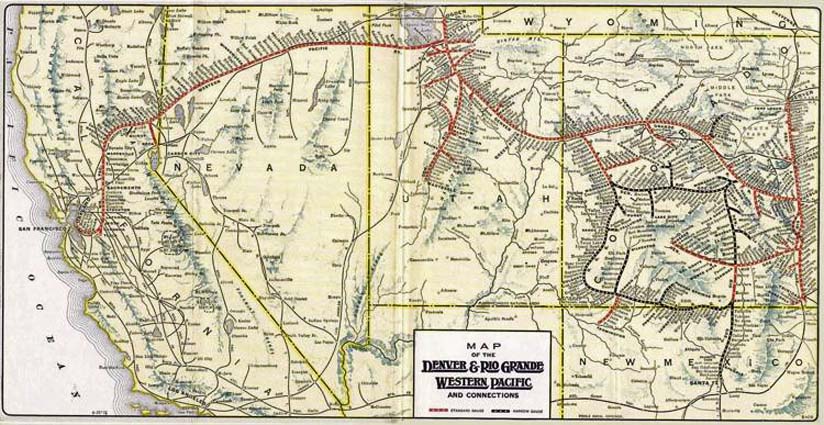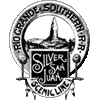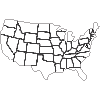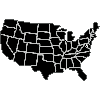
Colorado USA - Today, most Americans when they think of railroads, if they think of them at all, are likely to conjure a single word, Amtrak.
America's national railway traverses this state, true.
But most of us get around even the most treacherous regions of Colorado, such as the jeep trails that circumnavigate the high alpine, by car.
That wasn't true a century-and-a-half ago.
Back then, automobiles didn't exist, and "roads" were un-traversable.
"They were quagmires, muddy and impassable for any horse-drawn wagon," said Don Paulson, a board member of the Ridgway Railroad Museum, and the curator of the Ouray County Historical Museum.
Trains were the solution to traversing these steep crags and deep valleys.
Look at a map of the Denver & Rio Grande Railroad of 1914, and marvel at the number of railroads that crisscross this state compared to any other.
The mountains are the reason.
And the most spectacular feats of railway engineering of all took place right here, in the San Juans.
For four days next week, Ouray County Railroad Days will celebrate the region's rich railway history.
Events will include guided hikes, an open house at the Ridgway Railroad Museum, and an evening talk on Rio Grande Southern (RGS) locomotive 36, the first locomotive that RGS founder Otto Mears, known as the "Pathfinder of the San Juans" for his many railway and toll road building projects in the region, purchased for his railroad.
"It was his private engine. The car that delivered the payroll was right behind it," Paulson said.
The railway was bound for the mines, the economic lifeblood of this region.
"The price of transporting ore to Denver or Pueblo dropped by a factor of 10 as soon as the railroads arrived," Paulson said (meaning profits were up 1,000 percent).
Trains first came to Ouray in 1887 and Telluride in 1891.
"Roads weren't improved until after World War II, and that's what caused the trains to disappear. But until that time, trains were it. These were not dinky little railroads. And they were critical to this region," Paulson explained.
Before he built the RGS, Otto Mears began constructing the Silverton Railroad, which traversed Red Mountain Pass from Silverton to Ironton.
Mears' quest was to complete the big loop, linking mines and towns in a wide circuit from Durango, to Mancos, to Dolores, to Rico, to Telluride (via a spur line), and then over the Dallas Divide, down into Ridgway, and south to Ouray.
The idea was to go from there to Silverton, and thence back to Durango.
"He couldn't do it. Red Mountain Pass is the most difficult thing to traverse in all of Colorado," said Steve Patterson, a volunteer at the Colorado Railroad Museum in Golden.
 One drive over Red Mountain Highway 550 and you'll quickly understand why. What Mears could do, was build the Silverton Railroad, a feat in itself.
One drive over Red Mountain Highway 550 and you'll quickly understand why. What Mears could do, was build the Silverton Railroad, a feat in itself.
"The Denver & Rio Grande did a survey and concluded it couldn't be done. Mears used their plans and built it," Paulson said.
The railroad was abandoned in 1921, and the tracks were ripped out in 1926.
There's no trace of it left today.
But the right-of-way still exists, and you can walk it.
"Some of the most spectacular construction on Red Mountain Pass was at Corkscrew Gulch, a very unique place," Patterson said, where "the trains were able to turn around and go back to Durango."
On Thursday and Friday, Paulson will lead two walks along Mears' Silverton Railroad right-of-way, with an opportunity to view not only the route where the old railway was (and the spectacular setting), but historic town sites, as well.
Thursday's walk will be from the top of Red Mountain Pass to the Guston town site.
The walk on Friday will be "from Guston to the Corkscrew turntable, then to the railroad's terminus north of Ironton."
Paulson said that these downhill hikes require some bushwhacking.
Wear long pants, bring lunch, weather gear, and be in good shape.
Meet at the Corkscrew Gulch 4WD trailhead, 7.8 miles south of Ouray on US 550, by 09:00.
For more information, call 970-325-0931.
Events next weekend also include a tour of Paulson's model railroad, a system that takes up two-thirds of the basement in his home, "is loosely based on the Rio Grande Southern", and includes about 100 buildings, 50 engines, and he said, "maybe 500 cars."
Sunday brings a car caravan tour of the RGS route from Ridgway to the top of Lizard Head Pass, with stops at dozens of viewpoints along the way, and data from museum staffers.
It departs from the railroad museum at 09:00 and returns by 16:00 (the tour is limited to eight cars, and pre-registration is encouraged).
Next year will be Railroad Days' 15th birthday, perhaps the biggest celebration yet.
"We're building a railroad in Ridgway, with a half mile loop of track. And next spring we'll have a steam engine, an actual, operating, steam engine, that is a replica of Otto Mears' first locomotive on the RGS, number 36," Paulson said.
Leslie Vreeland.
provisions in Section 29 of the Canadian
Copyright Modernization Act.










